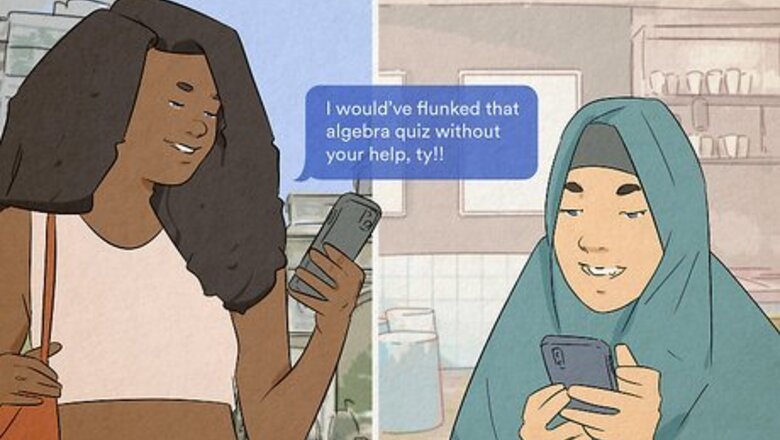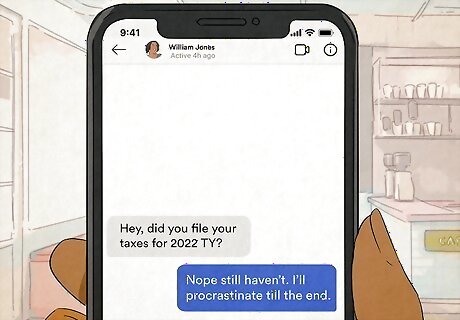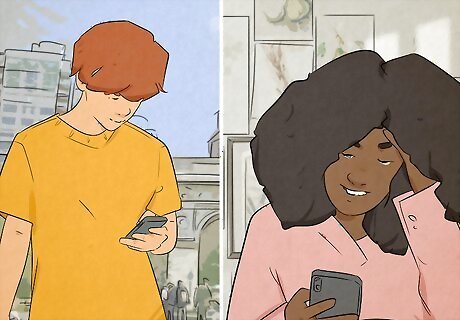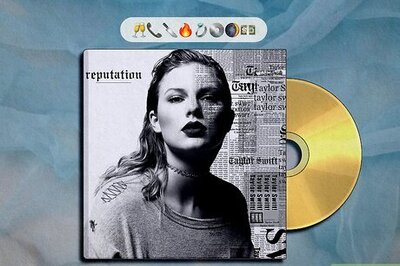
views
- “TY” means “thank you” over text and on all social media platforms like TikTok, Twitter, Instagram, Facebook, Snapchat, and more.
- Reply with “you’re welcome” or a positive emoji to show you got the message and appreciate the sender’s thanks.
- Use “TIA” (“thanks in advance”), “TYVM” (“thank you very much”) or “Thx” (“thanks”) as alternatives to the classic “TY.”
TY Meaning

“TY” means “thank you” over text, social media, and online messaging. It’s a shorthand way to type “thank you” and can be all lowercase (“ty”), uppercase (“TY”), or capitalized (“Ty”). It’s popular on Snapchat, TikTok, Twitter, Instagram, Facebook, and WhatsApp, but you may encounter it informally at work over Slack or in an email. “TY” is a casual abbreviation and won’t appear in formal communication, like in an email to or from your boss. “TY so much for dinner tonight!” “I would’ve flunked that algebra quiz without your help, ty!!”
Other Possible Meanings

“TY” may have an industry-specific meaning based on your profession. If you’re texting a colleague about a work or professional situation, “TY” will probably be uppercase and have a specific meaning related to your field. If you’re not sure what your coworker’s text means, substitute “thank you” for “TY” in the message and see if it makes sense. If it doesn’t, they may be referring to something like: Total Yield (stock exchange) Target Year (government) Tax Year (taxes and finance) Transposons of yeast (medicine or biology)
Pronunciation

“TY” is typically pronounced like “tee wye” when spoken out loud. “TY” is an initialism, meaning it’s an acronym pronounced as its letters (like how people say “el oh el” for “LOL”) rather than by making a new word out of it (like how “NASA” is pronounced “na-sah”). “TY” is mostly only said out loud when someone’s reciting a text message or using text lingo in normal speech for fun or affect.
Responding to TY

Say “You’re welcome!” when someone sends you a thankful “TY” text. When someone sends “TY,” they’re appreciative of something you’ve done for or offered them. Acknowledge their gratitude by saying “you’re welcome” just like you would in a verbal conversation. If you’re an iPhone user, try reacting with a thumbs up or heart in place of (or in addition to) a reply. Them: “ty so much for your help today!”You: “Of course! You’re welcome ????” Them: “I’m so glad you could help set up for the party tonight, ty ty!”You: “Any time!”

Respond to “TY” with a sweet or encouraging emoji. If you’re in a hurry or aren’t sure exactly what to say to someone’s “thank you” text, send an emoji to show you got the message and appreciate the thanks. Try a ???? (smiling face), ❤️ (heart), ???? (thumbs up), ???? (people hugging), or any other positive emoji to keep up the good vibes. Feel free to go silly for fun situations, or more heartwarming in emotional scenarios or to comfort someone over text. Them: “Ty for helping me move!”You: “????????” Them: “I really appreciate your support while I navigate this breakup. Ty ❤️”You: “❤️????”
Similar Abbreviations

Use “TU,” “TIA,” “TYVM,” and more to show your thanks. If “TY” is feeling a bit overdone to you, change things up with a different acronym. There are lots of ways to say “thank you” and each version has its own slightly different spin on the classic “TY.” For example: TU or TQ = “Thank you” TIA = “Thanks in advance” TQVM, TYVM, or TUVM = “Thank you very much” TVM = “Thanks very much” TYSM = “Thank you so much” Thanx or Thx = “Thanks”


















Comments
0 comment